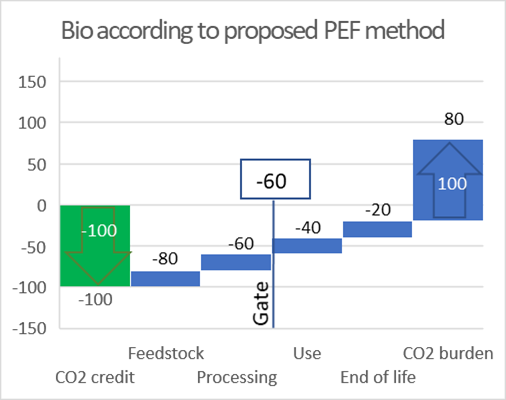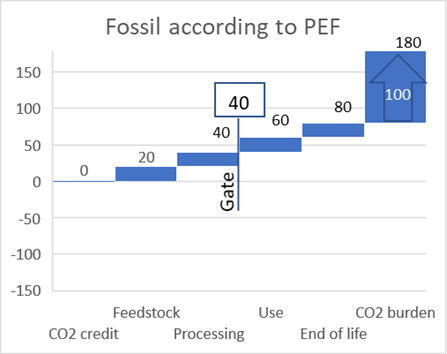
Achieving more sustainable carbon cycles in Europe can only take place if the carbon accountancy is right, concludes Cefic in its latest position paper concerning the Product Environmental Footprint (PEF). The European Commission plans to apply the PEF method as the guiding approach for environmental impact assessment. Currently, this methodology does not incentivise the use of bio-based materials, and there is no recognised benefit granted for the use of biogenic carbon at the beginning of the life cycle over the use of fossil carbon.
“The unique merits of using biomass that has grown by absorbing carbon dioxide through photosynthesis are not recognised as they should. For a blossoming bioeconomy in Europe, this needs to be redressed”, explained Bernard de Galembert, Sector Group Manager at Cefic.
In other words, a cradle-to-gate life-cycle analysis using the PEF methodology, does not give credit to biomass-derived products where CO2 was removed from the atmosphere during photosynthesis and plant growth. To incentivise the use of bio-based products, Cefic proposes an alternative method to assess the carbon footprint of bio-based products, as well as a more supportive policy framework.
The graphs below from the position paper illustrate the current methodology (graphs 1 and 2), as well as the proposed alternative accounting method (graph 3): Imagine there are two identical products, but one based on fossil feedstock and the other, on bio-based feedstock. For simplicity, it is anticipated exactly the same CO2 footprint in production and logistics of these two feedstocks, as well as the exact same manufacturing processes and the same final uses. The only difference is in the CO2 emission at the cradle, where bio-based is negative (due to uptake of CO2) and fossil-based is zero. With this method there is the same total carbon footprint at end of life, but the difference also shows up at any stage during processing and use.

Note to graphs: the numbers in the graphs are imaginary and for illustration purpose only
Bio-based products: switching to a circular economy
Bio-based products are products wholly or partly derived from renewable materials of biological origin (i.e. from plants, crops, trees, algae and biological waste). These products are used in a wide range of applications, such as energy, textile, plastics, chemicals, pharmaceuticals, hygiene, food and many more. Ideally, bio-based products are circular by nature, since they are made of renewable resources, are designed to be re-used, re- and up-cycled several times, and at the end, for biodegradable ones, returned to nature through biodegradation or composting. To fully reflect these assets, it is crucial to achieve a comprehensive and meaningful method to account for the footprint of biogenic carbon and allocate it to the actors along the bioeconomy value chains.
For an alternative methodology
Earlier in July, nine European associations, jointly representing industries producing bio-based products, proposed an alternative methodology towards an accurate accounting for carbon from biomass in the Product Environmental Footprint (PEF). Aligned, Cefic is convinced that the use of that methodology will be more intuitive and transparent, besides being ISO and CEN compliant. It will show the actual difference in CO2 footprint between biomass-derived and fossil products at each and every stage of the life cycle.
Additionally, it will avoid the challenges of double counting of CO2 credits, since all “end-of-life” CO2 emissions will have to be counted as contributing to climate change, whether biogenic or fossil-based. Finally, it can enable consumers to make an informed purchasing decision, based on the demonstrated and transparent climate benefits of bio-based solutions.
Download the cefic position on PEF (the Product Environmental Footprint)
Source
Cefic, press release, 2022-09-21.
Supplier
European Chemical Industry Council (CEFIC)
European Commission
Share
Renewable Carbon News – Daily Newsletter
Subscribe to our daily email newsletter – the world's leading newsletter on renewable materials and chemicals











